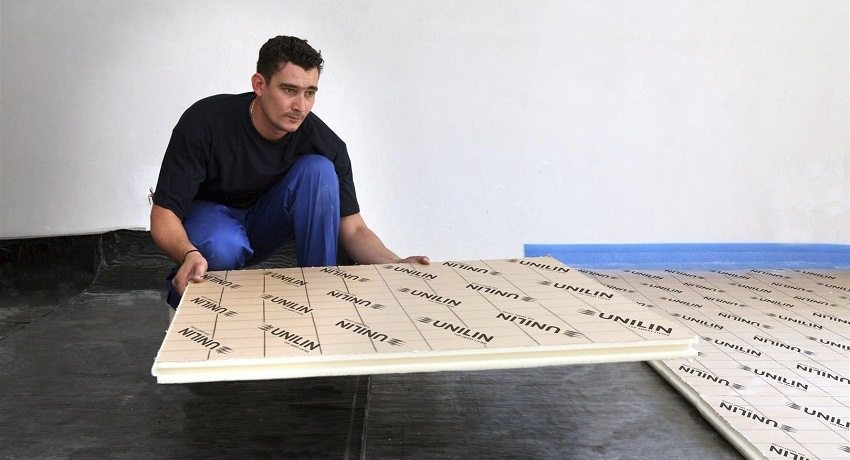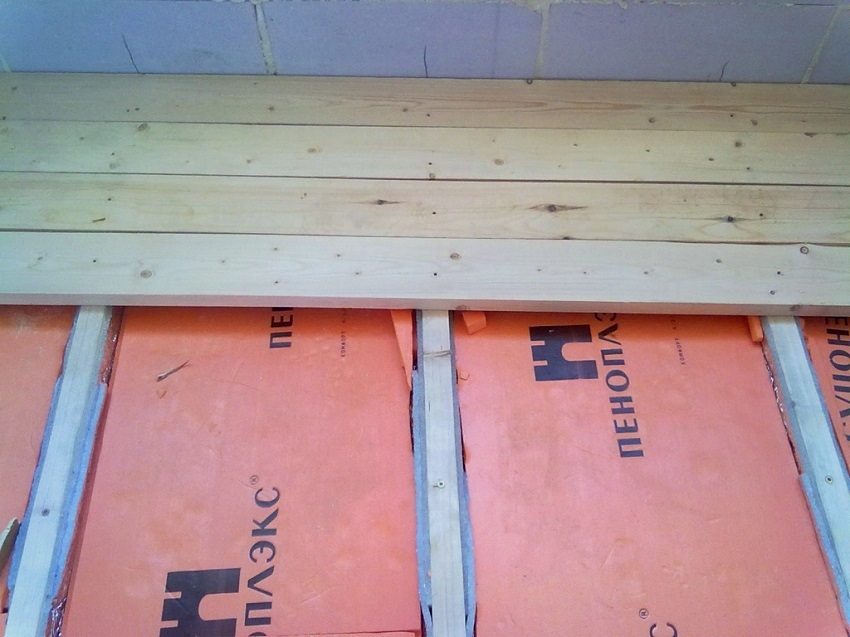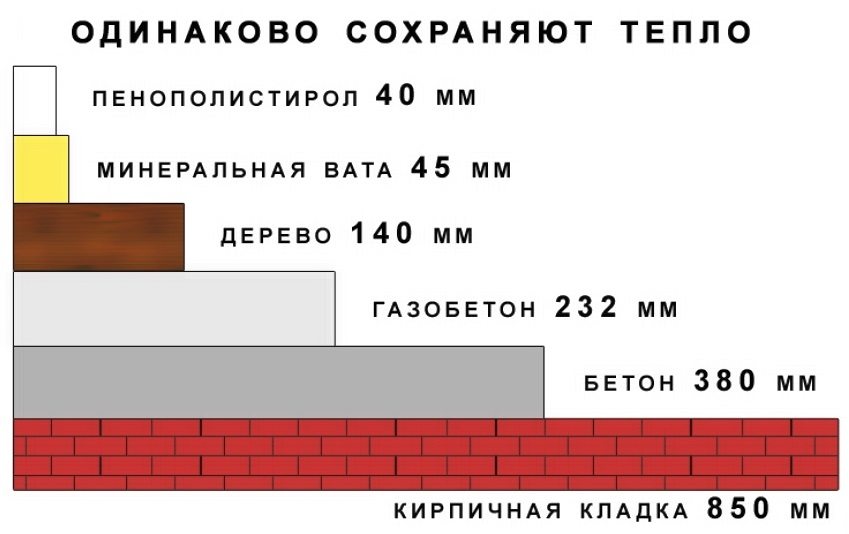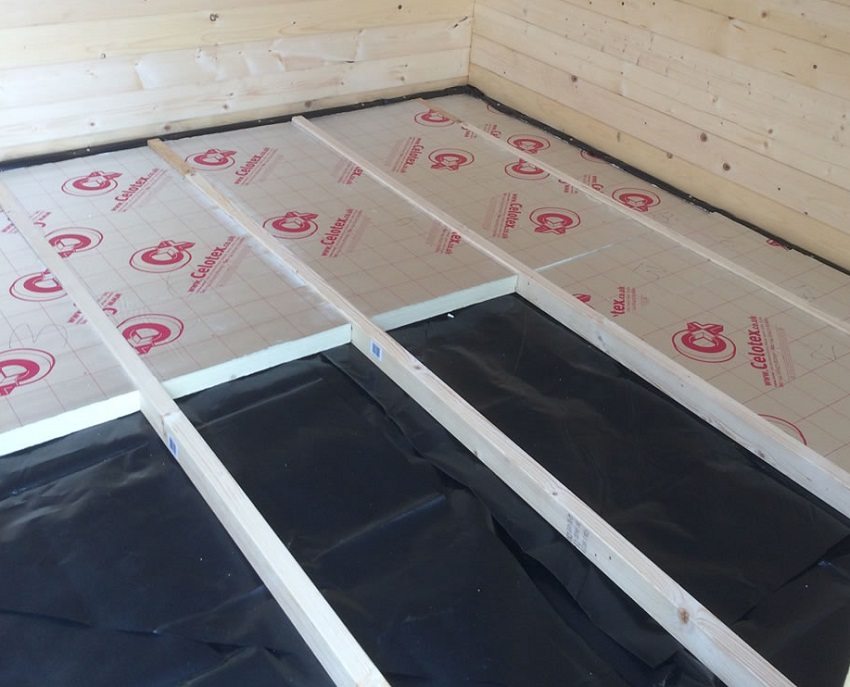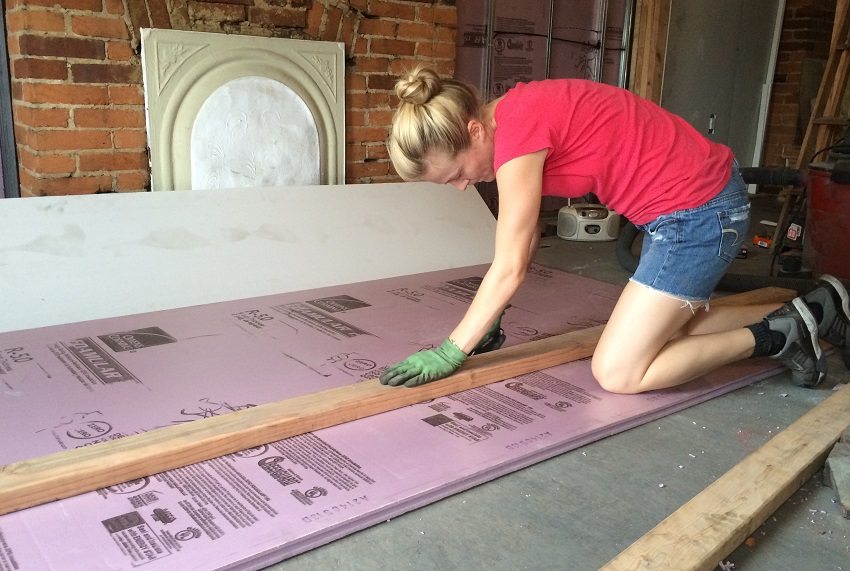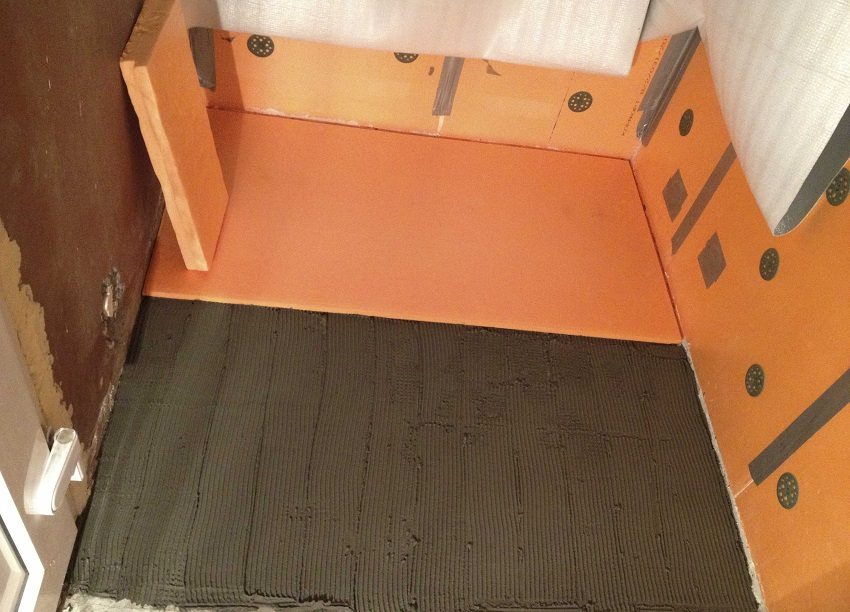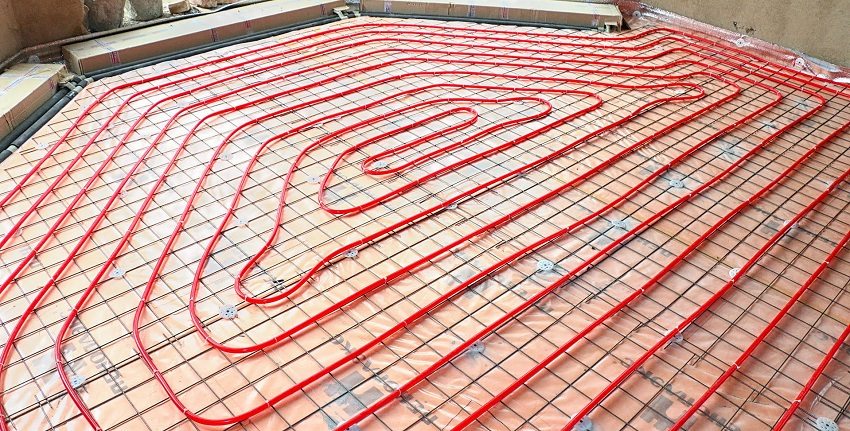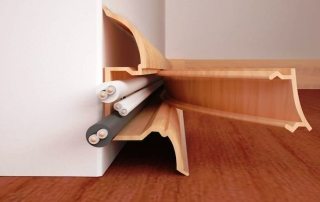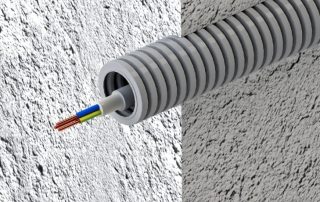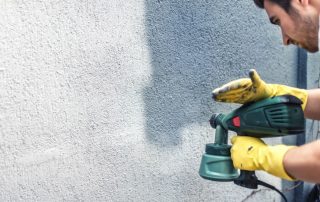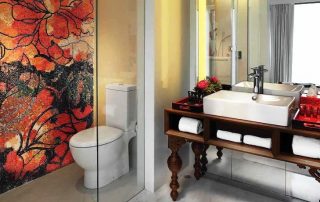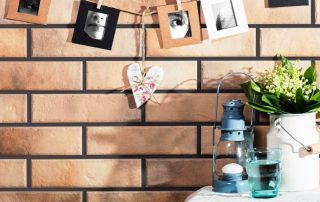Penoplex for the floor today is the most effective way of thermal protection of premises. This material, which is inherently an advanced foam, has an excellent ability to retain heat, but at the same time is strong enough to be used even under a floor screed. Penoplex — this is extruded polystyrene foam, the types and features of which should be considered in more detail.
Content [Hide]
Penoplex for floor: basic characteristics
Penoplex appeared on the construction market relatively recently, but has become one of the most demanded heaters. It gained its popularity due to the advantages that it possesses:
- absolute safety for health, which allows the material to be used in any living space;
- good density, thanks to which the material retains heat perfectly;
- impermeable to steam, excluding the formation of condensation;
- moisture resistance;
- good performance in sound insulation;
- not susceptible to decay and mold formation;
- sufficient strength;
- high elasticity providing strength and integrity in tension and compression;
- incombustibility resulting from the use of fire retardants;
- long-term operation, which, according to manufacturers, can reach 50 years;
- high class of wear resistance;
- the ability to make a piece of material of any shape using only a knife.
With such an impressive list of advantages, the material has the following disadvantages: the glue is poorly absorbed, which complicates the installation and is also loved by rodents.
Penoplex for flooring does not have any special classification. However, there are different types of it, differing in physical and geometric parameters. The material varies in thickness from 0.5 to 3 cm, in density from 31 to 45 kg / m³. Standard dimensions of slabs are 120x60 cm.
Extruded polystyrene foam is used for various types of insulation work. They are sheathed with internal and external walls, ceilings and ceilings, loggias and balconies, but it is especially necessary to dwell on the methods of floor insulation with this material.
Useful advice! When choosing a penoplex, you should pay attention to its density. It is not difficult to check it. Squeeze the material with your fingers. After loosening, there should be no visible dents. This indicates the good quality of the plates.
Penoplex floor insulation methods
The technology of floor insulation using penoplex has some features for various bases. Most often, this material is used when installing a floor directly on the ground, on a concrete base, in the construction of various types of "warm floors", on logs. In addition, Penoplex is often laid under the floor screed.
Related article:
Using foam under the floor screed. Independent carrying out insulation works with the help of penoplex under the classic and self-leveling floor screed.
In order to start work on floor insulation it is necessary to take care not only of a sufficient amount of materials, but also of the availability of the necessary tools. Let's list the main ones:
- a puncher will be required to remove irregularities on concrete floors;
- a drill having a nozzle for mixing the solution in the case of a screed device;
- building level, with which the leveling of the base cushion or screed is carried out;
- ordinary spatulas 80-100 mm and 350-450 mm in size;
- spatula with teeth 1 cm long 20 cm;
- a sharp knife for cutting polystyrene foam;
- polyurethane foam for processing utility lines;
- glue for penoplex. This is a special adhesive composition that does not contain substances that dissolve polystyrene foam.
Laying foam for the floor can be done independently, subject to certain rules and features, taking into account one or another option. In order to understand all the nuances, let's consider all the options in more detail.
Technical characteristics of boards made of extruded polystyrene foam:
| Indicator name | Test Method | unit of measurement | Indicator value | |
| Type 35 | Type 45 | |||
| Density | GOST 17177-94 | kg / m³ | from 33 to 38 | from 38.1 to 45 |
| Compressive strength at 10% linear deformation | GOST 17177-94 | MPa | 0,25 | 0,50 |
| Water absorption in 24 hours, no more | GOST 17177-94 | % by volume | 0,2 | 0,2 |
| Fire resistance category | GOST 30244 GOST 30402 | G1, B2, D3, RP1 | G4, B3, D3 | |
| Thermal conductivity coefficient at (25 ± 5) ° С, no more | GOST 17177-94 | W / (m × ° C) | 0,028 | 0,030 |
| Operating temperature range | TU | ° C | from -50 to 75 | from -50 to 75 |
Floor insulation device on the ground
Very often, the floor of the first floor of a private house is made directly on the ground. In this case, it is necessary to insulate it very thoroughly and make waterproofing. For the purposes of insulation, penoplex is perfect. Parquet, laminate, tiles, linoleum and even self-leveling self-leveling floors... Work is performed in the following sequence:
- leveling and tamping the soil under the future floor. The zero level should be 50 cm below the surface of the intended floor, which will allow the entire "pie" to fit into this volume;
- construction of an underlying "cushion" from a mixture of crushed stone, gravel and sand. Its height ranges from 30 to 40 cm. The base is tamped very carefully and sprinkled with a 10 cm layer of granite screening or coarse sand. This layer is also well tamped and leveled horizontally;
- if the floor loads in the room are not significant, then the slabs of the material are laid directly on the resulting pillow. The joints between the foam floor slabs are glued with special glue and glued with tape. With a warmed foundation, penoplex can be no more than 5 cm in thickness. Otherwise, you need to take thicker slabs, with a thickness of 5 to 10 cm. Waterproofing is arranged on top of the film slabs;
- if it is assumed that the floor must withstand significant loads, then before laying the foam boards on the pillow, it is necessary to make waterproofing and a concrete screed with a thickness of 5 to 10 cm;
- on top of the foam boards, you can arrange a sub-floor made of plywood or other similar sheet material. Then the finishing coat is laid.
Useful advice! Laying of waterproofing on top of extruded polystyrene foam boards should be done without the use of adhesives based on various organic solvents in order to avoid destruction and dissolution of the boards. It is better to use self-adhesive membranes.
Installation of insulation on concrete floor slabs
When installing insulation on a concrete base, first of all, you need to make sure of its quality. If there are irregularities and deep potholes, then they must be eliminated by arranging a concrete screed. If the base is sufficiently homogeneous and even, then the floor foam can be placed directly on the slabs. This can be done "dry" or with a special glue. The glue is applied with a notched trowel. If the insulation is done on the ground floor, then it is imperative to do waterproofing before laying the material. This can be avoided if the adhesive is waterproof.
After laying the foam boards, they need to be glued together. Further actions depend on the load that the room will take. If it is large, then you need to make a concrete screed. If not, then you can arrange a rough floor on which to make the topcoat.
Underfloor heating device using penoplex
Warm floors are constructed using various heating devices. It can be heating pipes, cables and mats with electric heating elements, as well as "warm floor" film systems. All this is laid on top of the foam boards and poured screed... Only after that the finishing coating is mounted.
Floor insulation along the logs
The use of foam flooring on logs is usually done in wooden houses. In the case of a close location of the soil, the method is no different from the one described above, except that the slabs are laid between the logs, and the subfloor and the finishing coating along the logs. If there is a basement or underground under the house, then it is necessary to hem boards from below to the logs. Penoplex is laid on them and the joints are glued at it. A vapor barrier membrane is laid on top of the resulting surface and lag. Only after that the boards of the subfloor are filled, plywood on top of them and the topcoat.
Useful advice! To make the insulation more effective, you need to lay a layer of waterproofing on the boards, hemmed under the logs. It will not allow moisture to penetrate into the foam plates from the basement, and also to some extent protect against rodents.
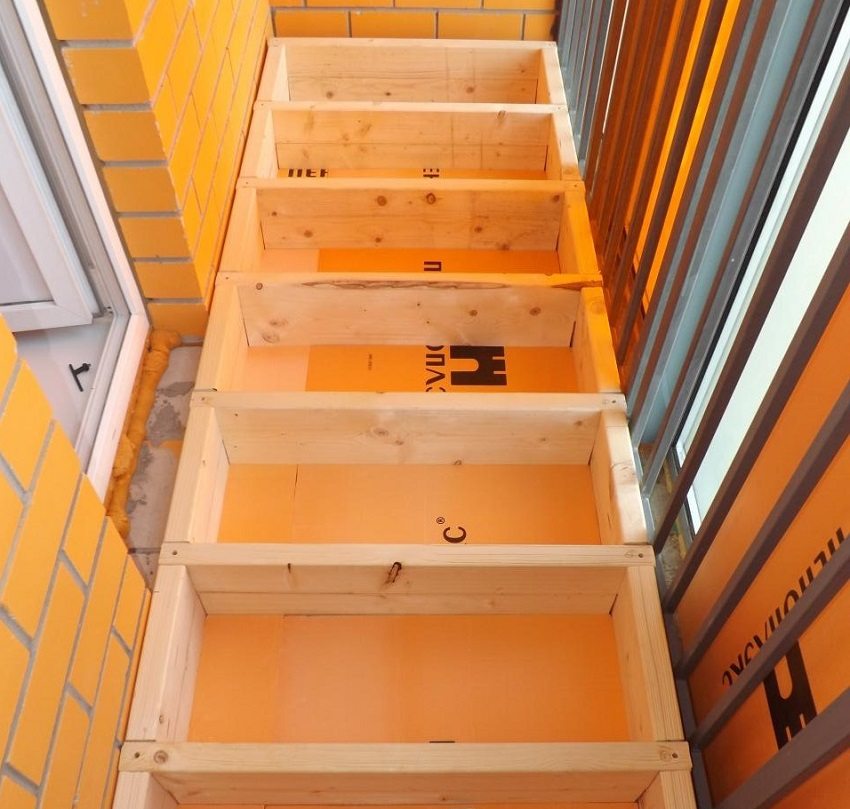
Balcony insulation with the use of penoplex
Penoplex under floor screed
All the methods disassembled above may, at a certain stage, include laying the foam under the floor screed.
Penoplex is a very warm and easy-to-install material. It is no coincidence that in recent years it has been used in almost any work on the insulation of buildings and structures. This allows you to significantly reduce energy losses and save a lot of money on heating.
